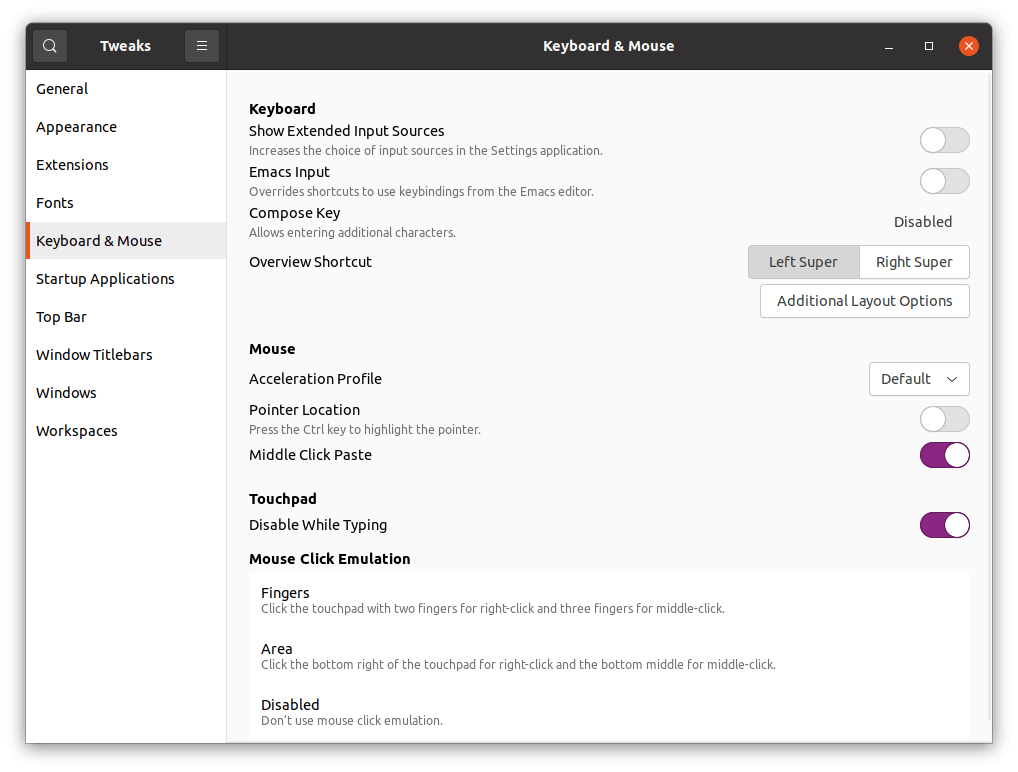Last Updated on May 22, 2022
5. Install GNOME Tweaks
GNOME ships with a System Settings tool which isn’t as diverse as some of its peers. There’s still useful options such as a simple way to enable remote access and file sharing. If you’re serious about customizing GNOME, you’ll need GNOME Tweaks. It’s not an official GNOME app, but it offers some advanced tinkering.
GNOME Tweaks can be installed from Ubuntu Software or from the command-line with:
$ sudo apt install gnome-tweaks
Here’s GNOME Tweaks in action.

The tool makes it simple to customize the appearance of your desktop, set fonts, define startup applications which are automatically started when you log in, configure windows and workspaces, and more.
Next Page: Page 6 – GNOME Extensions
Pages in this article:
Page 1 – Initial Update
Page 2 – Install Drivers
Page 3 – Enable Backups
Page 4 – Video/Audio Codecs and TrueType Fonts
Page 5 – GNOME Tweaks
Page 6 – GNOME Extensions
Page 7 – Install BleachBit
Page 8 – Night Light and Summary
All articles in this series:

Why only cover Ubuntu?
From independent surveys Ubuntu is the most popular Linux distro. Ignore the charts you see on some web sites that often have fairly obscure distros top. Their fanboys just vote them up using bots, partly because they are very passionate about them.
Interestingly, Linus Torvalds (the creator of the Linux kernel) has never even tried Ubuntu.
What about the command line? Newcomers shouldn’t only use GUIs in my opinion.
How about what to do when app doesnt have a package?
How about as a Linux user you whine, cry and criticize ever tutorial and article ever printed? It really gets old. I use Linux, I use Ubuntu, I use other OS’s. I appreciate people with the skill and knowledge to write tutorials and articles that can help others. No article can cover ‘everything Linux”. Thank you Steve.
We welcome suggestions what information you think is helpful for newcomers to Linux. When you’ve been using Linux for as long as we have, it’s easy to overlook things which would help beginners.
We will be covering the command-line in a later part of this series. But there’s a few important areas we need to cover first.